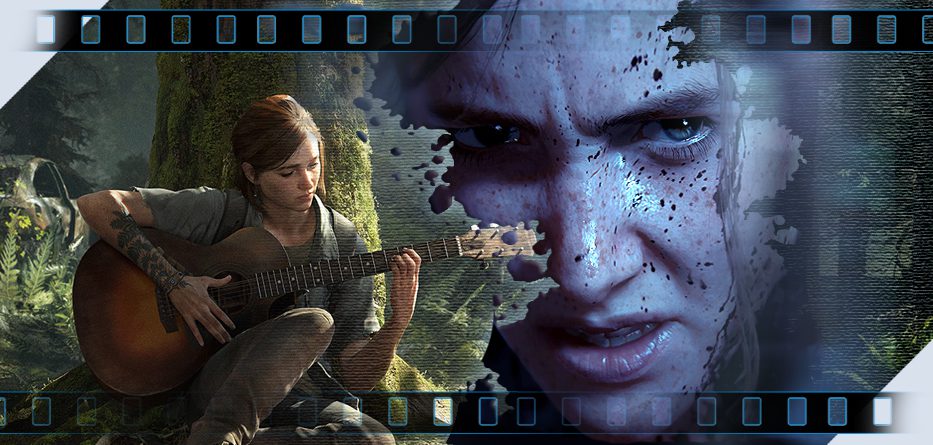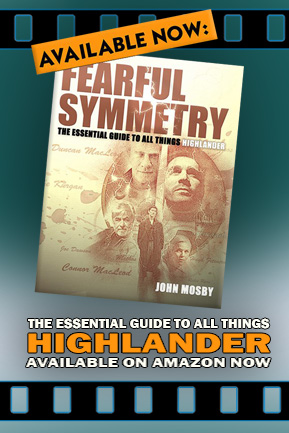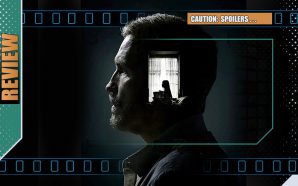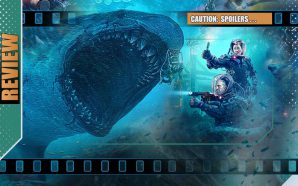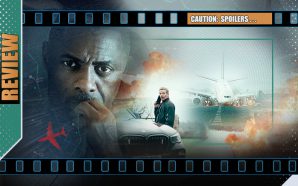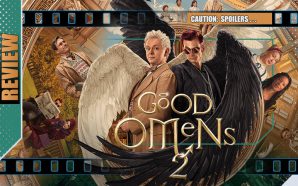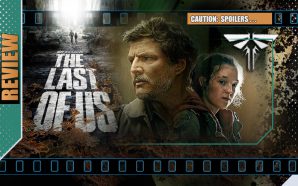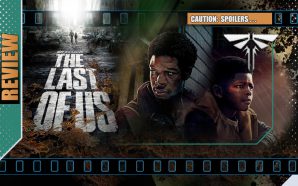As the opening scenes and credits start on Naughty Dog‘s The Last of Us: Part 2, there’s a genuine anticipation usually reserved for the movie-theatre and a mega-million franchise title. After several delays over the last six months, the arrival in your mailbox of the PS4 game is something of a pop-culture ‘moment’. Having spent a considerable amount of downtime exploring the world of Naughty Dog‘s other major title, Days Gone (surely one of the best value post-apocalyptic games with its massive area to explore, various missions and then additional challenges), the opening chapters of The Last of Us Part 2 have some familiarity in scope and design. You half expect Days Gone‘s Deacon St. John to greet you, the makeshift log-surrounded enclaves have similar architects and the sense of potential doom lurking around every tree and fallen building in a world gone to cannibalistic hell is palpable. But of course, this isn’t Deacon’s world, it’s a return to a different, if not dissimilar post-apocalyptic time and the lives of Joel and Ellie… survivors of the the original The Last of Us game that inspired many a title that came after the record-breaking 2013 release.
And if you thought Days Gone was occasionally bleak, The Last of Us : Part 2 says ‘hold my beer…‘ and carves its own very deep and sinewy niche…
Narratively, it’s difficult to review without giving away significant spoilers for what drives the story – one that largely focusses on Ellie travelling to Seattle on what is both a rescue mission and one of revenge. The storyline is unforgiving, bittersweet and its telling is pretty brutal… and there will be moments that compare to any big-screen tension and investment you have in beloved characters. Agendas clash, different points of view reveal difficult truths and various bad decisions are made that are beyond you rectifying as a player. What starts slowly, starts to escalate rapidly in the wake of an unexpected encounter and its outcome, one with major questions that the characters need answering for themselves and we, as an audience, want resolved and explained. But for those who haven’t played the original title in a while or have been playing others, there’s first a re-learning curve – remembering the different controls (many of which have been tweaked and refined) and many of the first few chapters are as much more about training you up and restoring some of that finger-muscle-memory as much as introducing you to a world four years or so on from the original.
This is a bloodier, nastier and even more cynical game than its predecessor though it feels less sensational and simply determined to show its premise in sharper relief. It’s a good story that has moments of jumping through familiar hoops (as do all games), but if you do find yourself stuck, you’re likely to have overlooked something obvious as the game does set up ways for you to resolve its scenarios if you’re paying enough attention or using resources available. That being said, like any game there are moments that are frustratingly difficult – often born out of not saving the right ammunition or finding yourself trapped in a particular environment until you can survive as much by persistence as skill. There are some moments mid-game where you have to get past a seemingly never-ending amount of patrols and their dogs (and it’s many hours of consistent playing before you’ll encounter the most brutal gang as featured in some of the game’s early promotions featuring arrows, axes and assorted grisly weaponry) and that can get monotonous and frustrating if you’re down to limited resources at set restart points. These can keep you going in circles for a while and perhaps even tempted to look elsewhere for helpful clues. (Clue: the game actually offers several options that be tweaked for hints and assistance). But there’s some genuine satisfaction when you do work out the best way out of a puzzle or out-run an enemy, whether it be moving a vehicle, setting foes against each other or spotting a solution or trap in advance. Never be afraid to fully examine a building’s exterior or shatter a few windows and there’s plenty to be examined (watch out for training manuals and letters that may point you in the right direction) or just make a madcap run for it when necessary…
Some may complain about the violence but with no pun intended, it’s a double-edged (if not always consistent) sword that essentially tells the character and the player that they can’t get away free from the consequences of killing – it’s a decision you can occasionally avoid in the game, but even then you may choose not to (one of the major elements is whether Ellie can learn from her mistakes – and frustratingly often doesn’t). One important thing to note is that the violence ‘hurts’ more not just because of more blood and pain, but because almost everyone you encounter, be they main characters of disposable henchmen, tend to have names (sometimes cried out by their team-mats or referred to in conversation). That’s particularly true with the scenes in which you’re not playing Ellie and some later sequences certainly ask you to judge events from other perspectives and motives. The game never makes you hate Ellie, but it sometimes comes close to hating her decisions and while you’ll not sympathise with her enemies completely, at least one character has some understandable motives and experience-touchstones that compare and contrast very effectively.
In advance of release, there were some leaks about the story beats, but unless you purposely went looking for such, it’s been perfectly easy to avoid them. It was also noted that regions such as some in the Middle East have banned the game. If this is because Ellie is gay (a fact revealed in the prequel add-on of the original game) then that feels like a complete, prehistoric reaction to an element that is, after the initial set-up, no more or less important than a heterosexual relationship would be. Yes, in some ways it’s groundbreaking to have a character on such a major release be non-heterosexual, but only in its welcome indifference. To bitch about Naughty Dog being ‘agenda driven’ in a society where inclusion is already no big deal for most people, is utterly juvenile and ridiculous. There is some drug-taking (Ellie and Dina partake of some weed), but in a production with regular evisceration, shooting, murder and carnage, you’re probably in the wrong place if it’s a same-sex kiss or a joint that horrifies you or keeps you away.
Interestingly, the bonafide reviews – like this one – have been largely positive in the extreme, with minor quibbles, yet the general user-base has had a decidedly more mixed rating… possibly down to some of the controversial story-decisions more than the game-play. While it’s not perfect – we’re asked to care about the violence but the game demands it continues, the weapon-swapping controls are pretty hard to master when speed is needed and the uneven pacing is often slower than you might think with plenty of walking and talking but then intercut with moments of pure adrenalin – The Last of Us: Part Two still feels like a worthy successor to the original, receiving creative and production upgrades so that it looks and feels every bit as cutting-edge as advertised.
The behind-the-scenes talent of voice/performance-captured Troy Baker, Ashley Johnson, writer Laura Bailey Halley Gross (Westworld) and creator/director Neil Druckmann have all done us proud. Time-consuming and emotionally-draining, but in the best ways, this was certainly worth waiting for. And if the proposed HBO series of the title gets made, there’s already a high benchmark to reach…
*Addendum*
Having finished the game I’ve now deducted a point from the story. Without spoilers, the very last segment of the game acts as something of an epilogue that the story could have lived without – indeed, if the meaning of the game is to insist that violence and revenge is a downward spiral in which you have to hold on to better things, then it adds to a climax that has already spoken to that and was superior to this very final act. It feels like an addition made out of hammering home something that didn’t need to be shown and robbing the audience of something an earlier stop-point would have provided without losing anything of what came before. I think it’s the first time I’ve put down a controller and said ‘I don’t want to beat this…’ (the console fortunately takes control of the sequence at that point) but it’s savage, brutal and really serves no purpose – a serious lapse of judgement and a huge misstep that leaves a sour taste in an otherwise wholly amazing game.

- Story9
- Graphics10
- Controls9
- Pacing9

